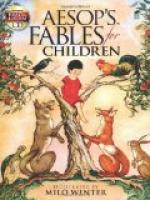|
This section contains 4,700 words (approx. 16 pages at 300 words per page) |

|
SOURCE: H. J. Blackham, in an introduction to The Fable as Literature, The Athlone Press, 1985, pp. xi-xxi.
In the following excerpt, Blackham defines the fable through a discussion of its traditional definition, its relation to parable and allegory, its images, its purpose, and its sources.
(i)
A reviewer who refers to a book as 'fable', casually or more intentionally, probably has in mind an eighteenth-century 'conte philosophique ', described by Voltaire as a work which says more than it seems to say; he might indeed be thinking of Candide. Any non-literary person asked about fable would most likely think of Aesop. The two are not as far apart as they seem. Aesop's Fables, in one compilation or another, have an honourable lineage in literature and in education; they are fables, not nursery tales. In the early days of Greek and Latin fiction, when different forms were being tried...
|
This section contains 4,700 words (approx. 16 pages at 300 words per page) |

|


